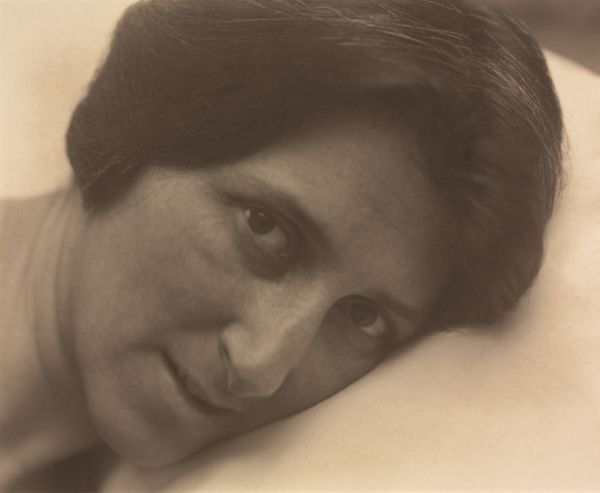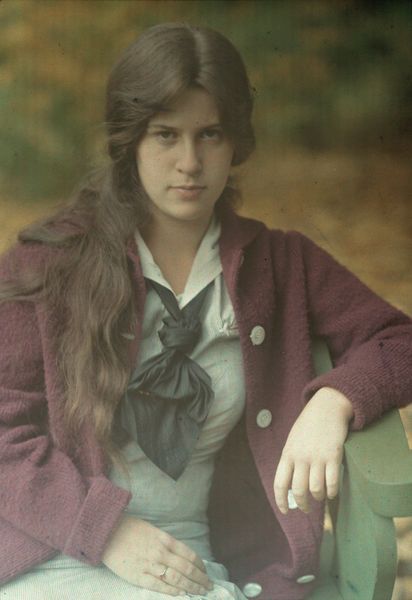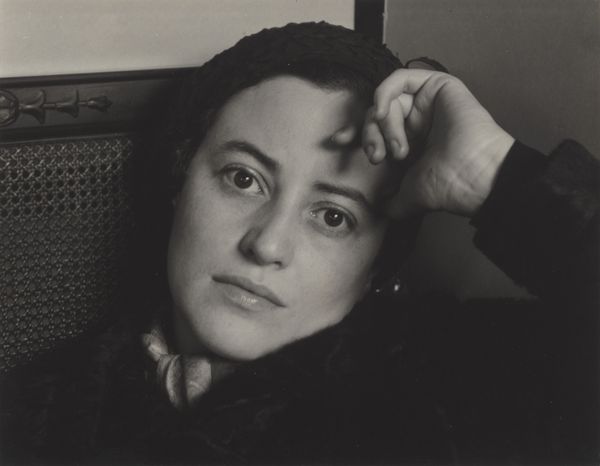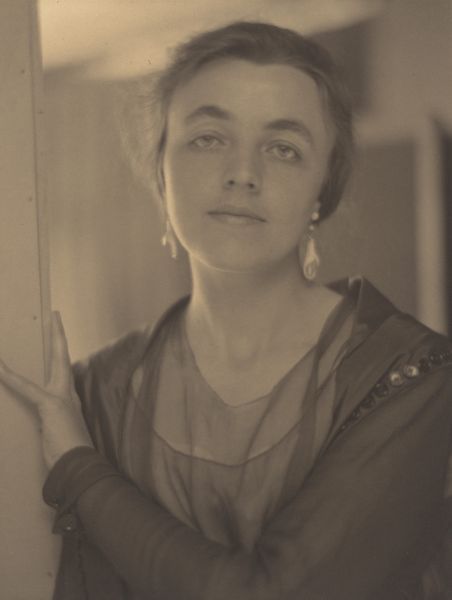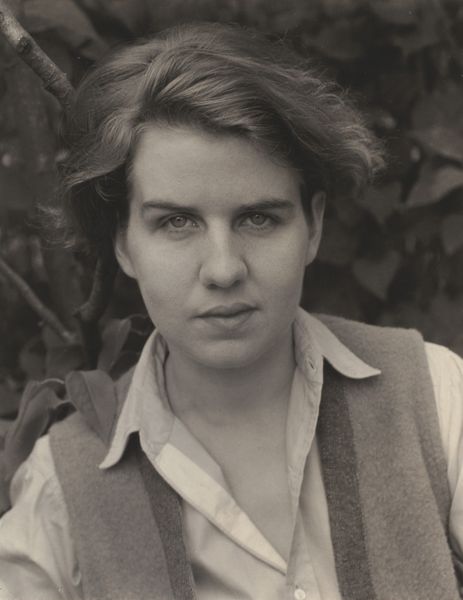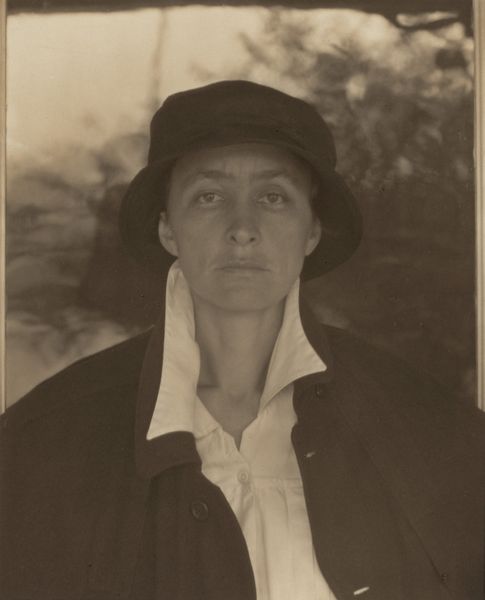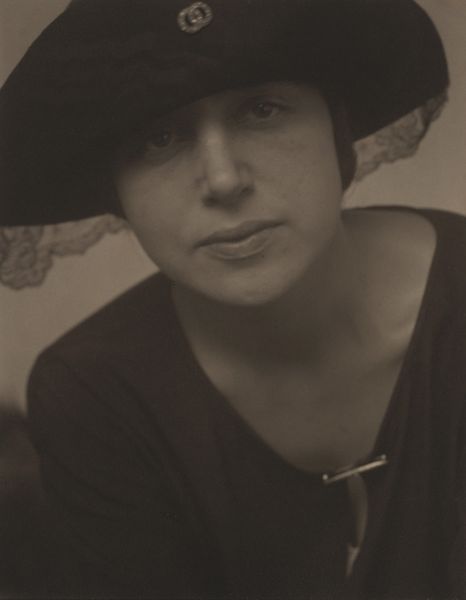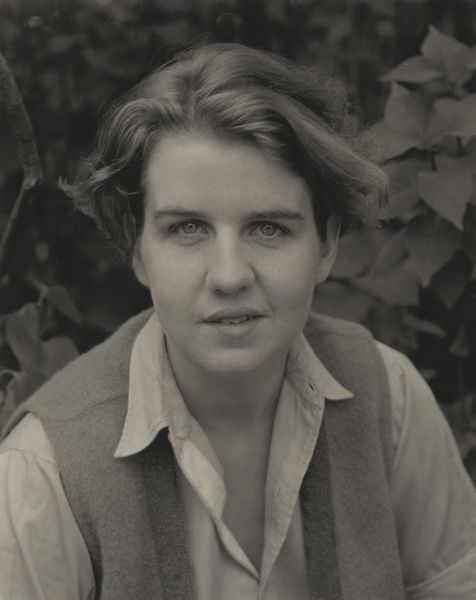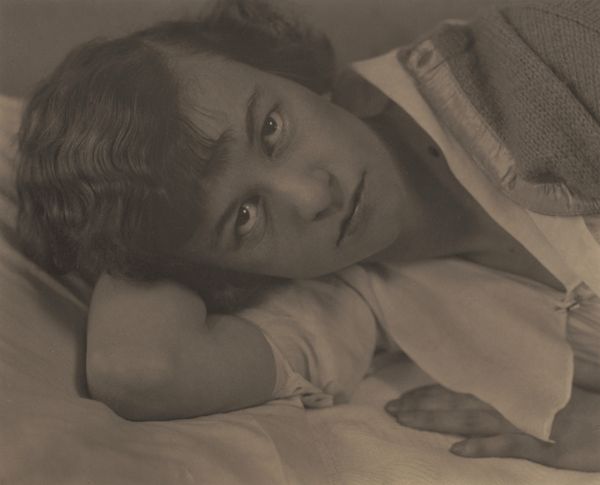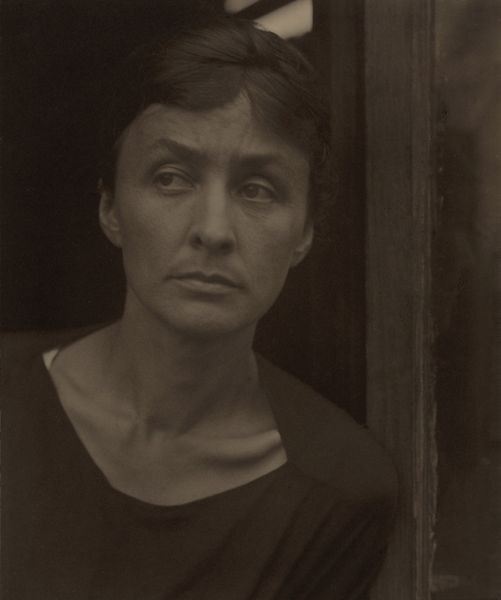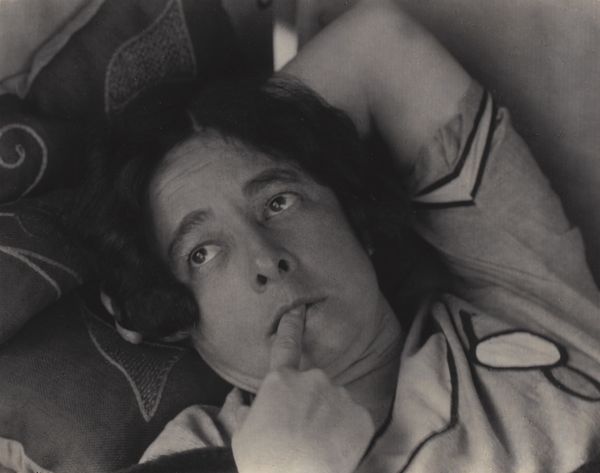
photography, inkjet-print
#
portrait
#
pictorialism
#
photography
#
inkjet-print
#
modernism
#
portrait photography
Dimensions: image: 17 × 11.9 cm (6 11/16 × 4 11/16 in.) overall: 17.8 × 12.7 cm (7 × 5 in.)
Copyright: National Gallery of Art: CC0 1.0
Curator: Let's turn our attention to this portrait, "Emmeline Stieglitz," an inkjet print made around 1907 by Alfred Stieglitz. What’s your initial impression? Editor: There's an undeniable softness to it, a gentleness almost. The diffused light, the muted tones, the pose itself. It evokes a sense of quiet contemplation. Curator: Indeed. Stieglitz was a key figure in promoting photography as a fine art. The process behind this print, even the choice of inkjet so many years after its creation, speaks volumes. Editor: I see how the use of soft focus and limited tonal range enhances that dreamlike quality. Structurally, her face, framed by her hand, becomes the focal point, a study in restrained elegance. Curator: Stieglitz championed pictorialism, mimicking painting's aesthetic qualities to elevate photography. It was also a means of resisting industrial labor processes—through manipulating each stage. Editor: It is interesting that his handwork attempts to replicate that of painters and fine artists working at that same time in America. It feels timeless and deeply personal, more than mechanical, really. The tones, especially, lend a weight to the photograph. Curator: Exactly. We must remember that Emmeline, his sister, was born into wealth created during the Industrial Revolution, her existence afforded due to those material advancements, while he seeks to obscure them. The photograph hides any evidence of mass manufacturing. Editor: Yes. Yet, isn’t the composition itself a key part of the content, the way her thoughtful gaze is directed off frame? To consider only process is limiting when so much attention to formal choices went into it. Curator: But considering the context deepens our viewing. Thinking of his other portraits, of Georgia O'Keeffe, of the social milieu...all add layers of understanding beyond formal composition. Editor: Point taken. Looking again, the material presence of the paper, combined with that near-monochrome palette, grants this piece a fragile beauty that transcends any one reading. Curator: Ultimately, by looking at it in those varied ways, from production to impact, the image resonates. Editor: It truly does, each view unlocks another door.
Comments
No comments
Be the first to comment and join the conversation on the ultimate creative platform.
